Abstract
Eighteen mouse t haplotype-carrying strains were found not to express cell-surface E molecules controlled by class II genes of the H-2 complex (= Eo strains). Northern and Southern blot analysis of these and other, non-t strains that also fail to express the E molecule, has revealed two kinds of defect. Three strains (CRO437, tw2, and presumably to) were found to transcribe the E alpha gene, but they were not able to convert the message into a functional protein. All other Eo strains fail to transcribe the E alpha gene because of a deletion encompassing the promoter region, the RNA initiation site, and the first exon. The length of the deletion is approximately 650 +/- 50 bp. These two defects closely resemble those found previously in standard inbred strains carrying the H-2f, H-2q (failure of E mRNA to be expressed functionally), H-2b, and H-2s (deletion of a part of the E alpha gene) haplotypes. In particular, the location and length of the E alpha deletion appear to be the same in the strains carrying this mutation. The E alpha deletion is in linkage disequilibrium with certain alleles at other H-2 loci in some of the strains. These observations, combined with the growing evidence that H-2 haplotypes associated with t chromosomes derive from a single ancestral haplotype, suggest that the E alpha deletion is an old mutation and that it has been disseminated in mouse populations by the t chromosomes.
Full text
PDF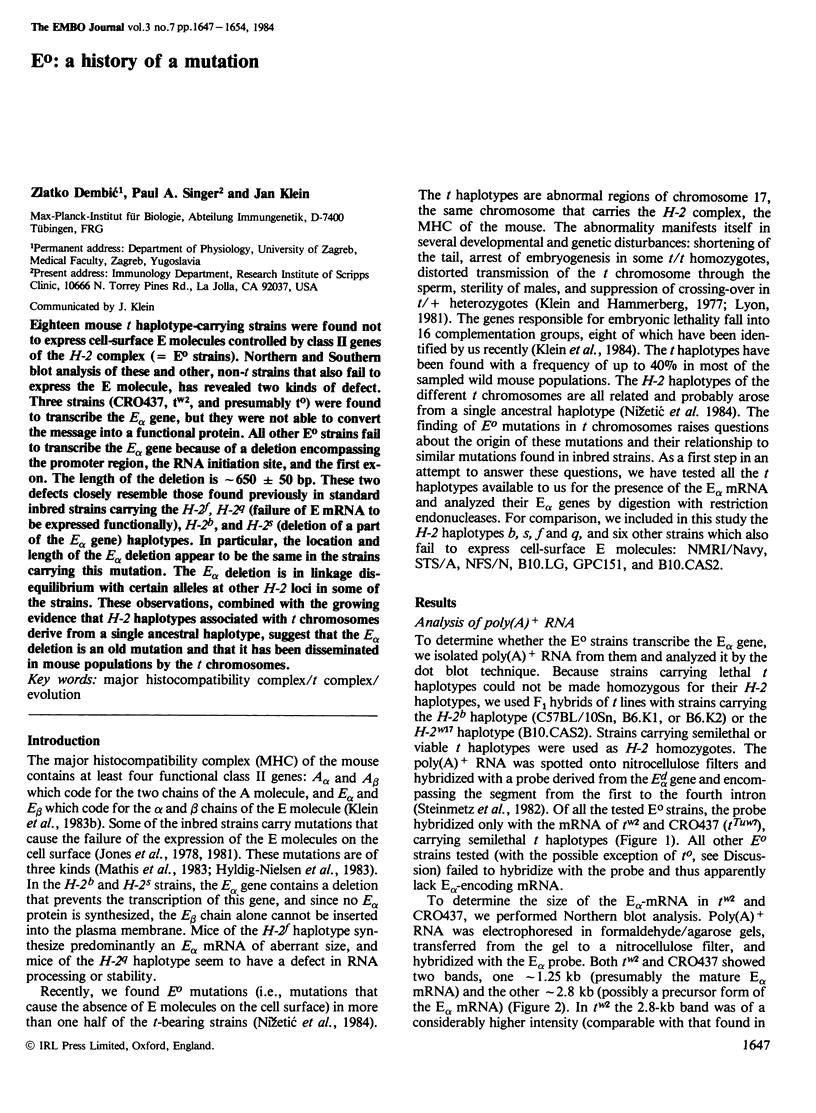
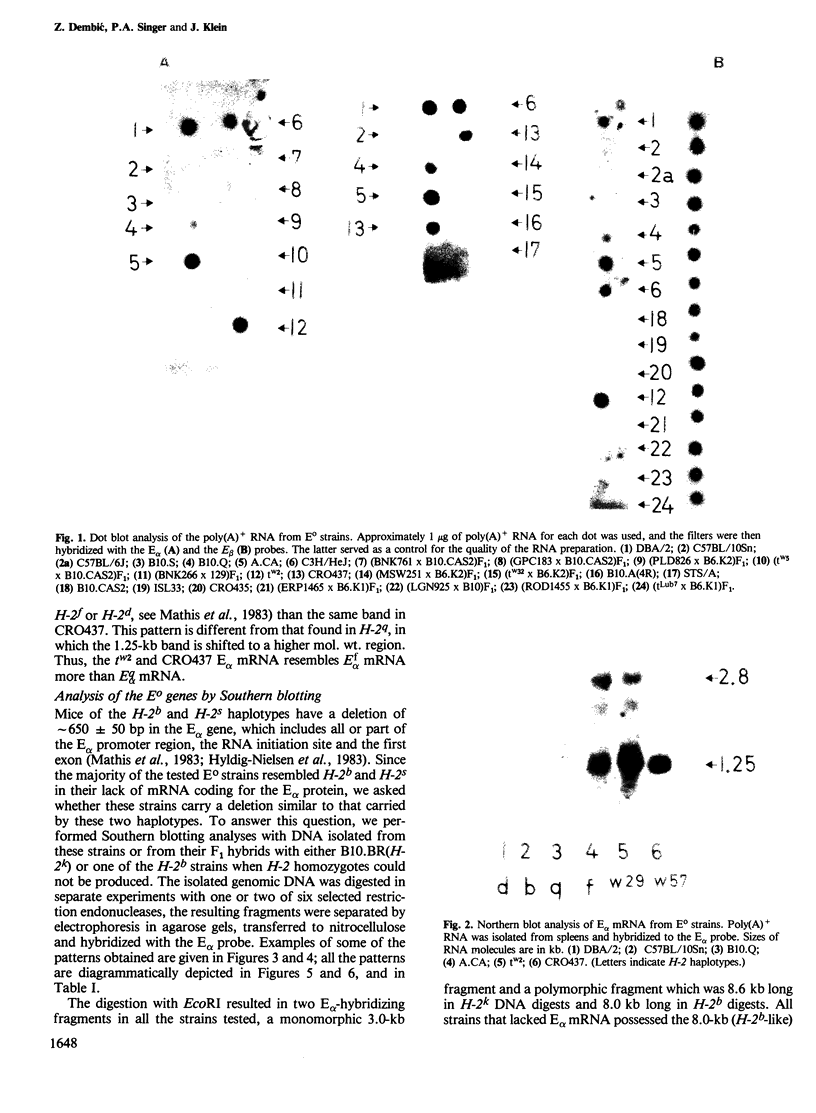
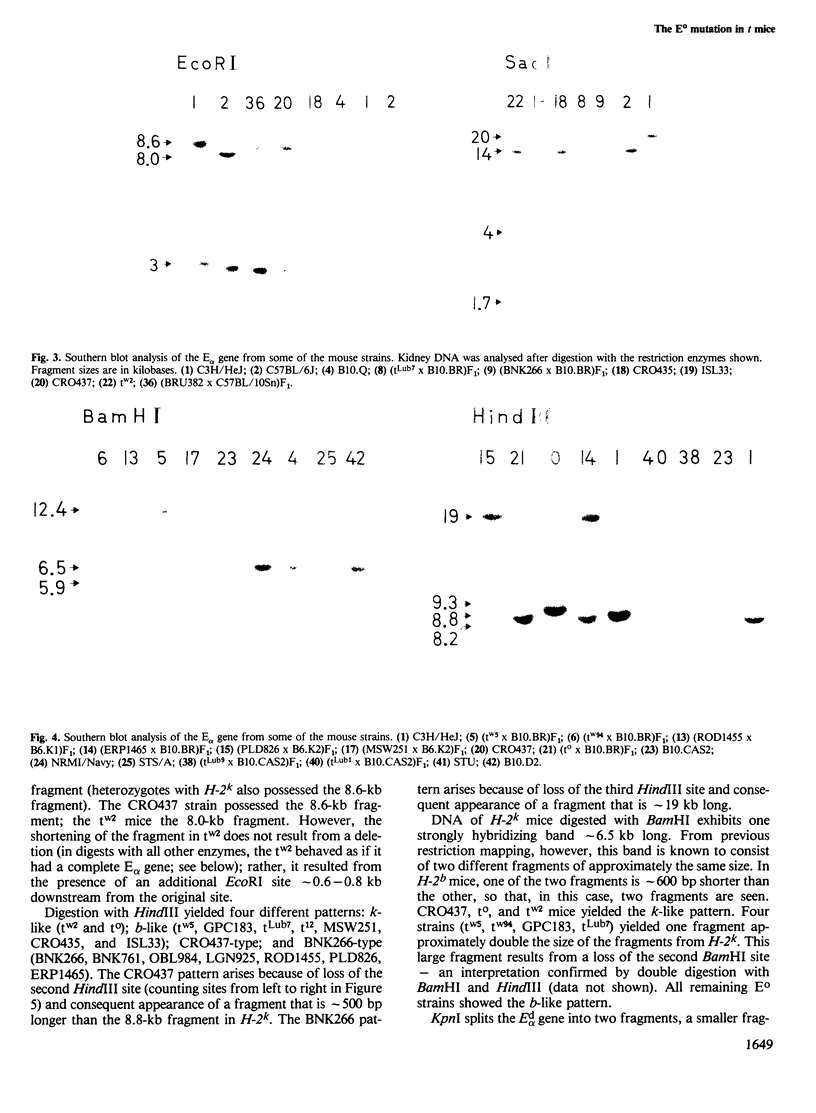
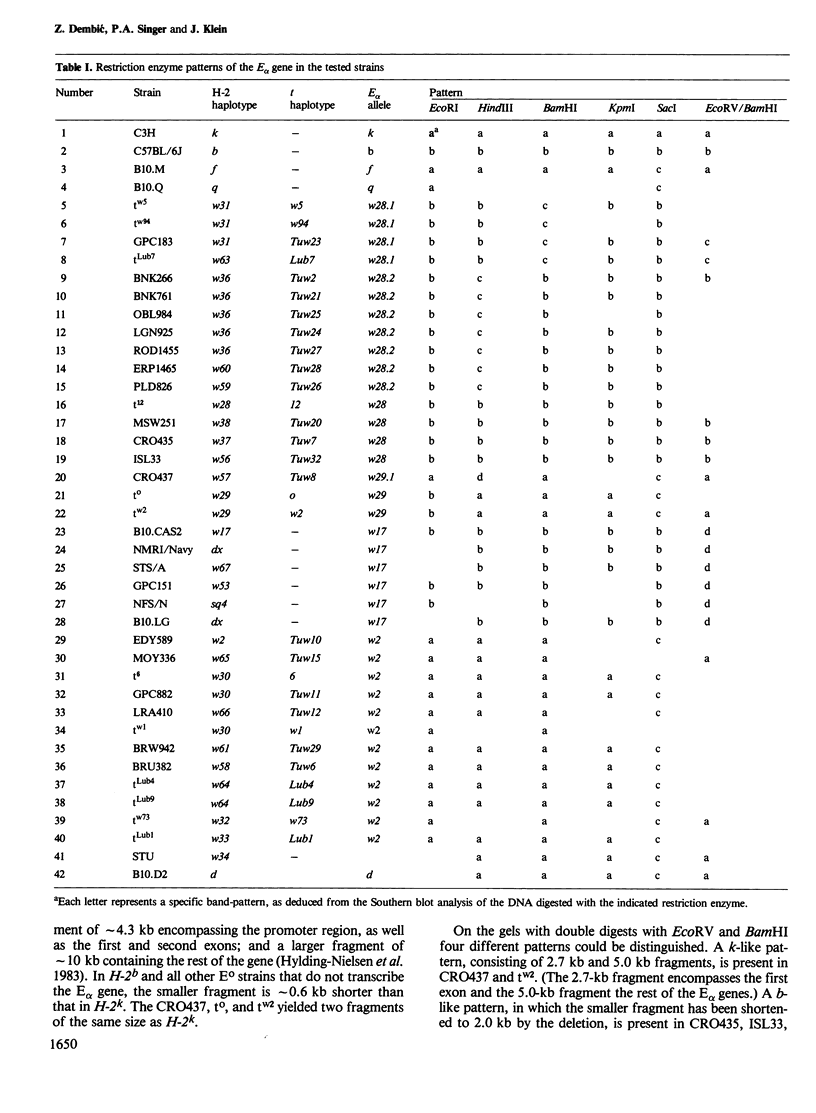
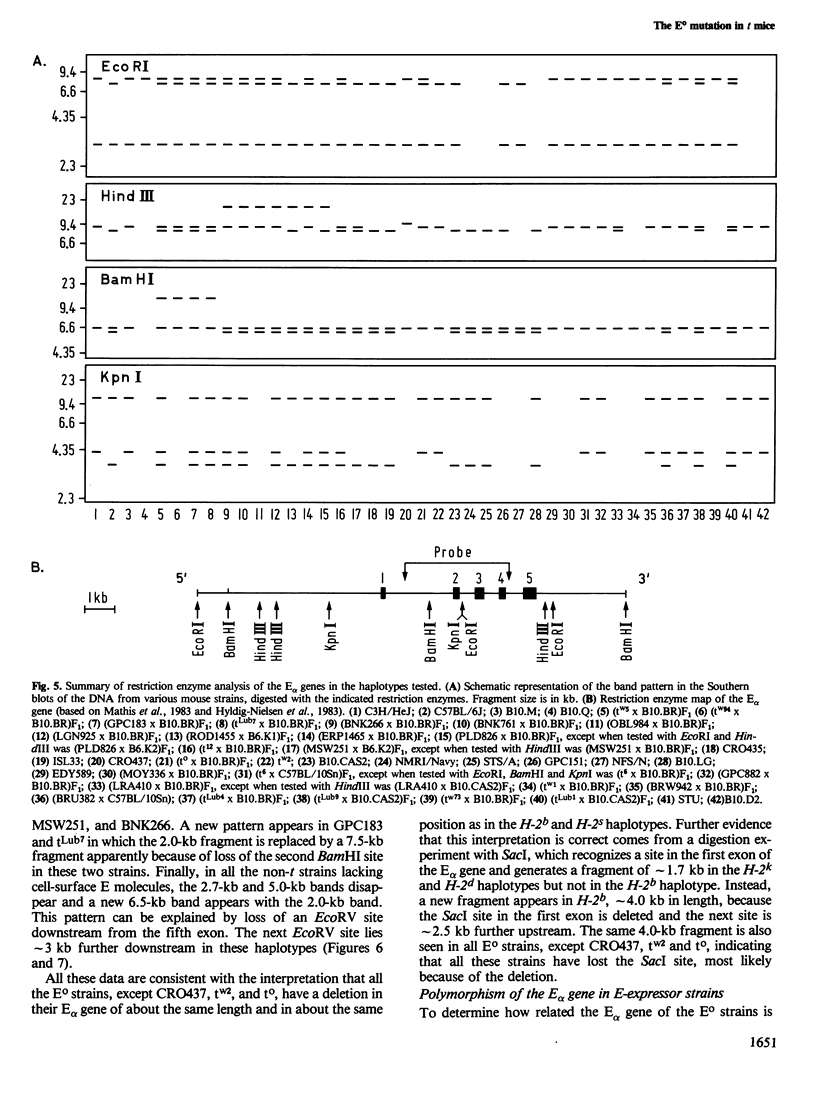

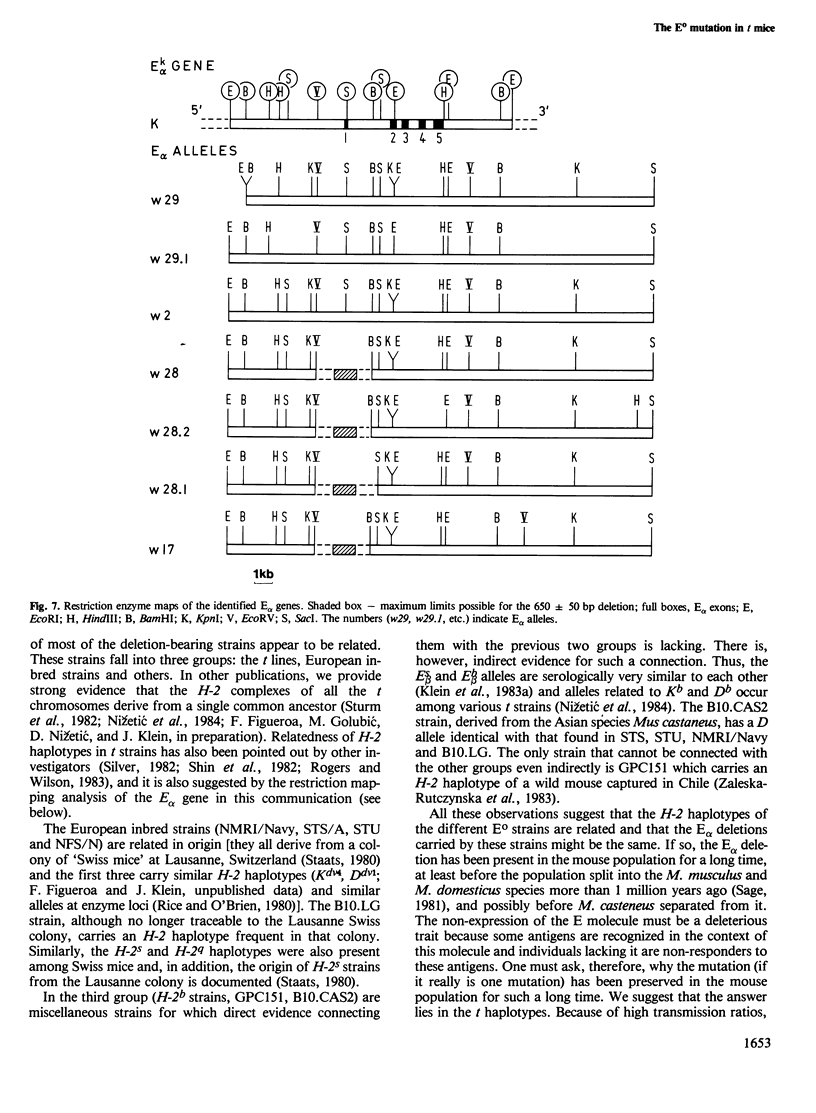
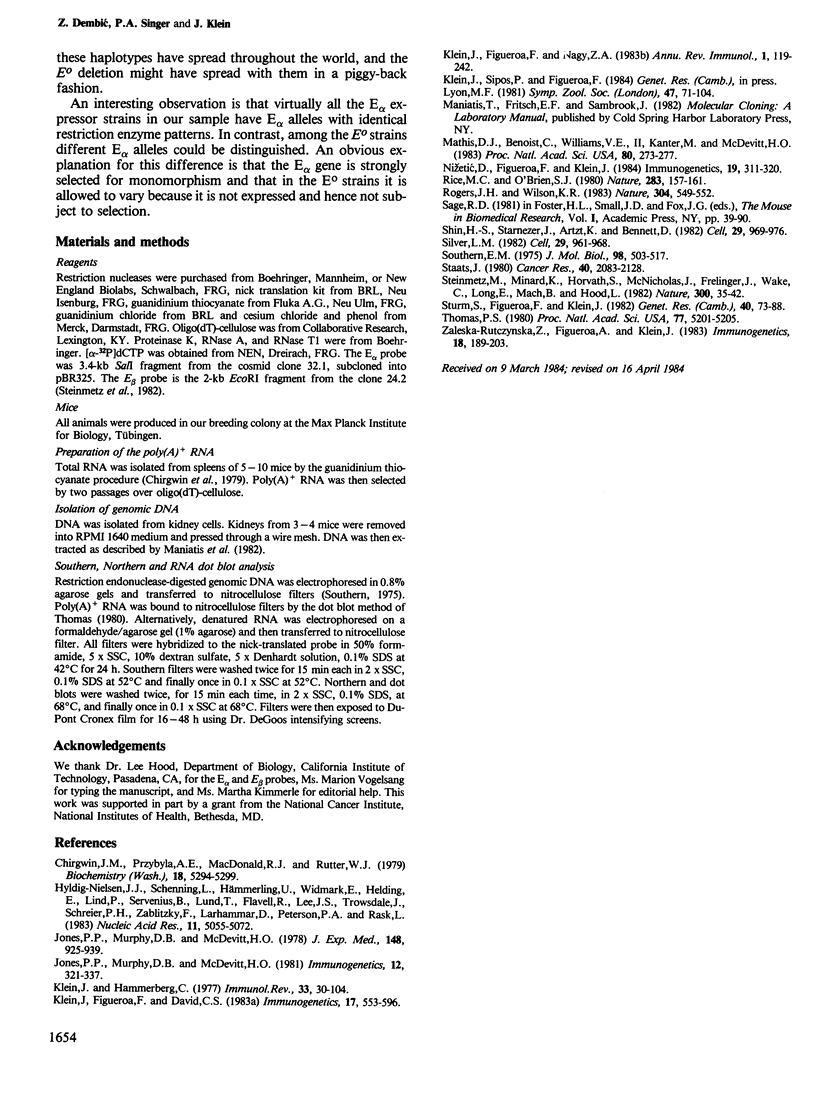
Images in this article
Selected References
These references are in PubMed. This may not be the complete list of references from this article.
- Chirgwin J. M., Przybyla A. E., MacDonald R. J., Rutter W. J. Isolation of biologically active ribonucleic acid from sources enriched in ribonuclease. Biochemistry. 1979 Nov 27;18(24):5294–5299. doi: 10.1021/bi00591a005. [DOI] [PubMed] [Google Scholar]
- Hyldig-Nielsen J. J., Schenning L., Hammerling U., Widmark E., Heldin E., Lind P., Servenius B., Lund T., Flavell R., Lee J. S. The complete nucleotide sequence of the I-E alpha d immune response gene. Nucleic Acids Res. 1983 Aug 11;11(15):5055–5071. doi: 10.1093/nar/11.15.5055. [DOI] [PMC free article] [PubMed] [Google Scholar]
- Jones P. P., Murphy D. B., McDevitt H. O. Two-gene control of the expression of a murine Ia antigen. J Exp Med. 1978 Oct 1;148(4):925–939. doi: 10.1084/jem.148.4.925. [DOI] [PMC free article] [PubMed] [Google Scholar]
- Jones P. P., Murphy D. B., McDevitt H. O. Variable synthesis and expression of E alpha and Ae (E beta) Ia polypeptide chains in mice of different H-2 haplotypes. Immunogenetics. 1981;12(3-4):321–337. doi: 10.1007/BF01561674. [DOI] [PubMed] [Google Scholar]
- Klein J., Figueroa F., David C. S. H-2 haplotypes, genes and antigens: second listing. II. The H-2 complex. Immunogenetics. 1983;17(6):553–596. doi: 10.1007/BF00366126. [DOI] [PubMed] [Google Scholar]
- Klein J., Figueroa F., Nagy Z. A. Genetics of the major histocompatibility complex: the final act. Annu Rev Immunol. 1983;1:119–142. doi: 10.1146/annurev.iy.01.040183.001003. [DOI] [PubMed] [Google Scholar]
- Klein J., Hammerberg C. The control of differentiation by the T complex. Immunol Rev. 1977 Jan;33:70–104. doi: 10.1111/j.1600-065x.1977.tb00363.x. [DOI] [PubMed] [Google Scholar]
- Mathis D. J., Benoist C., Williams V. E., 2nd, Kanter M., McDevitt H. O. Several mechanisms can account for defective E alpha gene expression in different mouse haplotypes. Proc Natl Acad Sci U S A. 1983 Jan;80(1):273–277. doi: 10.1073/pnas.80.1.273. [DOI] [PMC free article] [PubMed] [Google Scholar]
- Nizetić D., Figueroa F., Klein J. Evolutionary relationships between the t and H-2 haplotypes in the house mouse. Immunogenetics. 1984;19(4):311–320. doi: 10.1007/BF00345404. [DOI] [PubMed] [Google Scholar]
- Rice M. C., O'Brien S. J. Genetic variance of laboratory outbred Swiss mice. Nature. 1980 Jan 10;283(5743):157–161. doi: 10.1038/283157a0. [DOI] [PubMed] [Google Scholar]
- Rogers J. H., Willison K. R. A major rearrangement in the H-2 complex of mouse t haplotypes. Nature. 1983 Aug 11;304(5926):549–552. doi: 10.1038/304549a0. [DOI] [PubMed] [Google Scholar]
- Shin H. S., Stavnezer J., Artzt K., Bennett D. Genetic structure and origin of t haplotypes of mice, analyzed with H-2 cDNA probes. Cell. 1982 Jul;29(3):969–976. doi: 10.1016/0092-8674(82)90460-3. [DOI] [PubMed] [Google Scholar]
- Silver L. M. Genomic analysis of the H-2 complex region associated with mouse t haplotypes. Cell. 1982 Jul;29(3):961–968. doi: 10.1016/0092-8674(82)90459-7. [DOI] [PubMed] [Google Scholar]
- Southern E. M. Detection of specific sequences among DNA fragments separated by gel electrophoresis. J Mol Biol. 1975 Nov 5;98(3):503–517. doi: 10.1016/s0022-2836(75)80083-0. [DOI] [PubMed] [Google Scholar]
- Staats J. Standardized nomenclature for inbred strains of mice: seventh listing for the International Committee on Standardized Genetic Nomenclature for Mice. Cancer Res. 1980 Jul;40(7):2083–2128. [PubMed] [Google Scholar]
- Steinmetz M., Minard K., Horvath S., McNicholas J., Srelinger J., Wake C., Long E., Mach B., Hood L. A molecular map of the immune response region from the major histocompatibility complex of the mouse. Nature. 1982 Nov 4;300(5887):35–42. doi: 10.1038/300035a0. [DOI] [PubMed] [Google Scholar]
- Sturm S., Figueroa F., Klein J. The relationship between t and H-2 complexes in wild mice. I. The H-2 haplotypes of 20 t-bearing strains. Genet Res. 1982 Aug;40(1):73–88. doi: 10.1017/s0016672300018929. [DOI] [PubMed] [Google Scholar]
- Thomas P. S. Hybridization of denatured RNA and small DNA fragments transferred to nitrocellulose. Proc Natl Acad Sci U S A. 1980 Sep;77(9):5201–5205. doi: 10.1073/pnas.77.9.5201. [DOI] [PMC free article] [PubMed] [Google Scholar]
- Zaleska-Rutczynska Z., Figueroa F., Klein J. Sixteen new H-2 haplotypes derived from wild mice. Immunogenetics. 1983;18(3):189–203. doi: 10.1007/BF00952959. [DOI] [PubMed] [Google Scholar]






